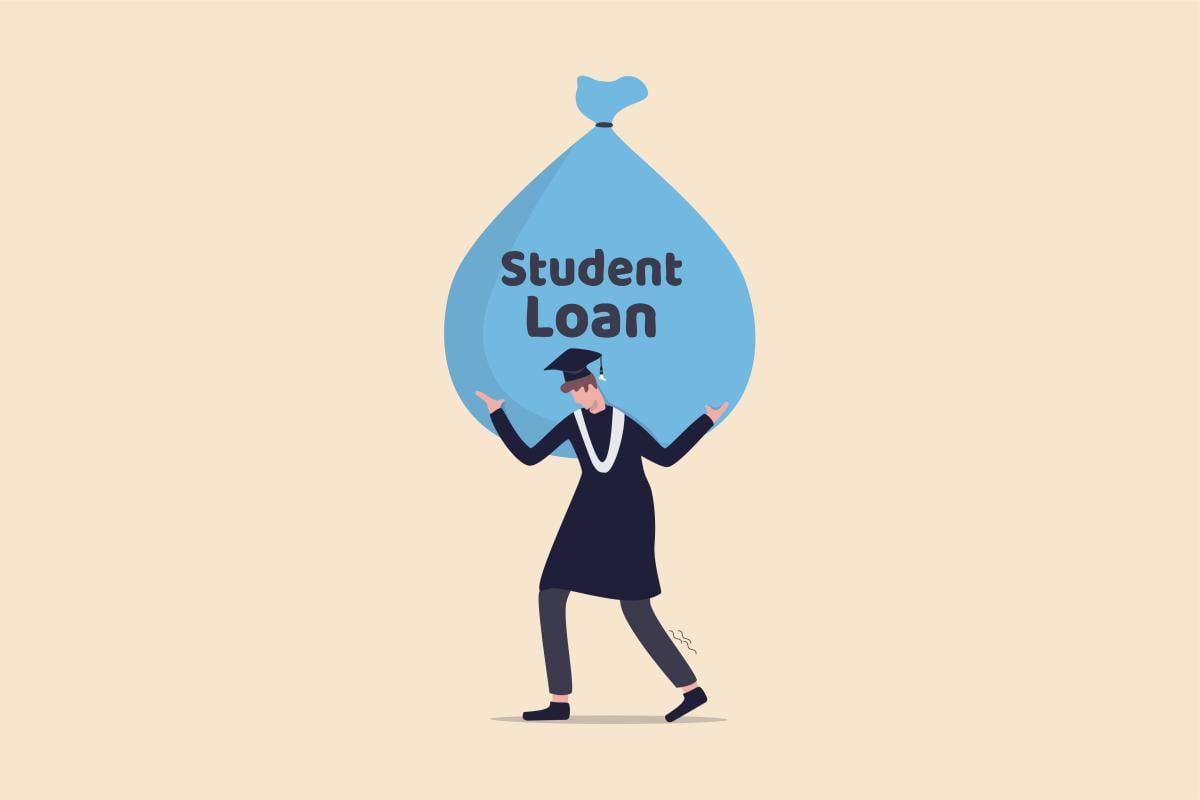
College students are taking on more private loan debt than ever before, with private loans now comprising nearly 8 percent of all student debt, according to the Institute for College Access and Success’s new report on the Class of 2020’s student debt burden. The trend is primarily fueled by an increase in private loans taken out by undergraduate students.
Private student debt—which comes from loans made by banks and other private lenders and lacks the protections of the federal loan programs—was at an all-time high at the beginning of the COVID-19 pandemic. Current students and graduates in repayment held an estimated $136.3 billion in private student loans as of March, a 47 percent increase from $92.6 billion in March 2014. And the private debt market increased almost 50 percent from the 2010–11 academic year to the 2018–19 academic year.
“It’s not just the overall amount of debt that students have that matters, but also what types of debt students take on, because some kinds of debt can be costlier, have higher interest rates and also have fewer protections than debt from the federal government,” said Oliver Schak, research director at TICAS and a co-author of the report. “We find that, in some states, private debt can be fairly common and private debt loads can be fairly high.”
Of the top 10 states with the highest average private debt levels for the Class of 2020, eight of them, plus Washington, D.C., were in the Northeast—Connecticut, Delaware, Massachusetts, New Hampshire, New York, Pennsylvania, Rhode Island and Vermont. Seven of those states and D.C. were also among the top 10 states with the overall highest average debt levels for the Class of 2020. Meanwhile, students who attended college in Western states tended to have lower amount of private debt and a lower amount of student debt over all.
There were also trends in the amount of private debt that students had depending on the type of institution they attended. Students who graduated from private nonprofit institutions tended to leave with higher private debt amounts than those who attended public nonprofit institutions. At 39 percent of the private institutions included in the report, the share of graduates with private debt exceeded 15 percent, but the same was true for graduates at only 22 percent of public colleges. The average amount of debt that students borrowed exceeded $50,000 at 92 private colleges and universities but at only three public institutions.
It’s unclear why the amount of private debt is growing, said Schak, largely because the private markets can be opaque and TICAS’s analysis relies on voluntarily reported data. Cody Hounanian, executive director of the Student Debt Crisis Center, said he views the data as highlighting the high cost of higher education.
“One of the important things to us is that student loan borrowers often have to use private student loans to fill in the gap between what federal student loans cover and the enormous cost of college,” Hounanian said. “Even accessing federal student loans combined with support from parents, in many areas, is still not enough to pay for higher education, and that alone should tell us that these costs have really skyrocketed and are out of control.”
The report does note, however, that 53 percent of undergraduates who took out private loans in 2015–16 didn’t max out the amount of federal loans they could use to pay for college. And 30 percent didn’t take out federal loans at all—though that percentage likely includes undocumented students, who aren’t eligible for federal aid.
The report shows how overall student debt burdens remained high at the onset of the pandemic for a class of students who graduated with a lot of uncertainty in the labor market, said Schak. The report relies on a state-by-state analysis of students’ average debt burden and, unlike in previous years, does not include nationwide figures due to data limitations.
The share of 2020 graduates with student debt ranged from 39 percent in Utah to 73 percent in South Dakota. Students in New Hampshire graduated with the highest average amount of debt, at $39,928, while students in Utah graduated with the least amount of debt—an average of $18,344. Nineteen states had students with an average debt amount of over $30,000, and in six states, the average amount of debt exceeded $35,000.
“One thing that is remarkable in terms of the high-level patterns is that you have higher average debt in the Northeast and more borrowing in the Northeast, and less borrowing and lower debt amounts in the West and in other states,” Schak said. “Those patterns seem to be pretty consistent over time.”
Another consistent pattern is that students at public institutions tend to have lower debt burdens than those at private institutions. Among the 436 public colleges and universities reporting data, 38 percent reported their students had less than $25,000 in average debt. Meanwhile, of the 664 private college and universities reporting data, only 18 percent reported average debt per student of less than $25,000.
For-profit institutions were not included in the state averages because only 10 of the 377 for-profit, four-year, bachelor’s degree–granting colleges chose to report the relevant data for the Class of 2020.
The report made several federal policy recommendations for reducing reliance on student debt and the burden of debt for current borrowers, such as increasing need-based aid, reforming the student loan repayment system, better protecting private loan borrowers and funding public colleges sustainably and equitably.
“I think TICAS gets it right when they say that state and local governments need to reinvest in higher education,” Hounanian said. “And we also need the federal government to step up and do their part, because we see there is a role for the federal government to play as well. And when we see that type of investment from society, it lifts the burden off the backs of students, parents and their families.”
from Inside Higher Ed | News https://ift.tt/3FokLO1


No comments:
Post a Comment